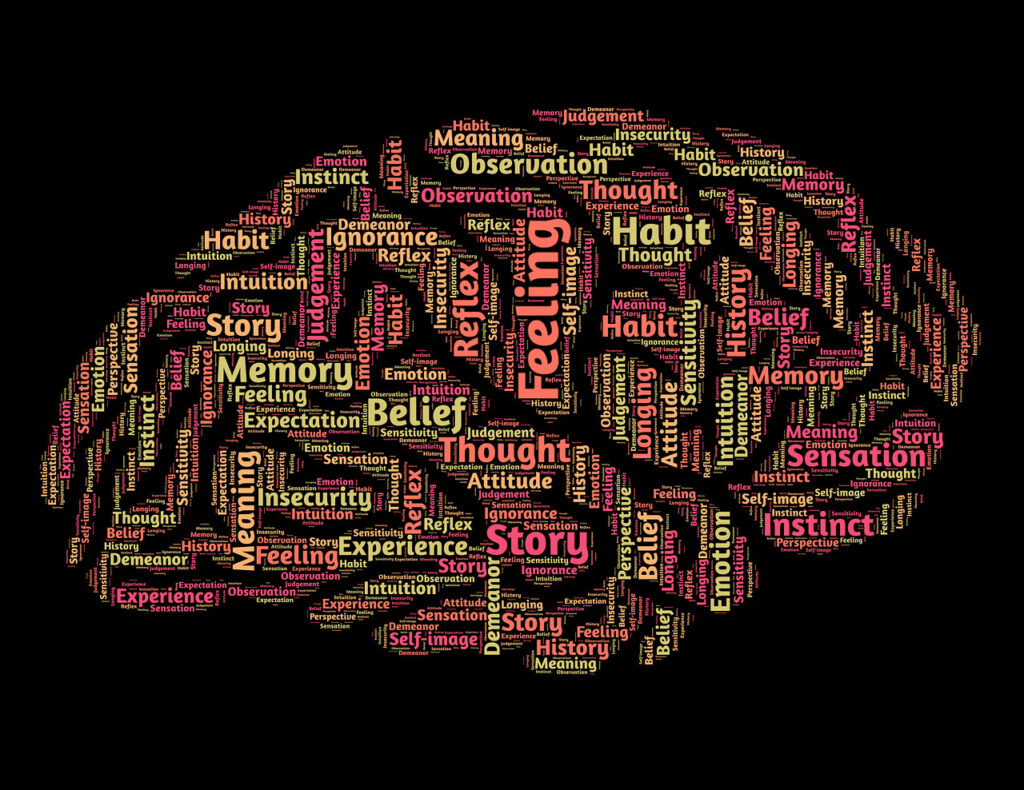Researchers from the Hebrew University of Jerusalem (HU) and the University of California, Berkeley, made progress in understanding a puzzling condition called unilateral neglect, in which stroke victims lose conscious awareness of half of what their eyes perceive. More than a quarter of all stroke victims develop this disorder.
After a stroke in half of the brain, for example, a person might eat only what is on the right side of the plate because they’re unaware of the other half. The person may only see the right half of a photo and ignore a person on the left side of the image. Surprisingly, though, such stroke victims can emotionally react to the entire photo or scene. Their brains seem to be taking it all in, but these people are consciously aware of only half the world.
This puzzling affliction highlights a longstanding question in brain science: What’s the difference between perceiving something and being aware or conscious of perceiving it? You may not consciously note that you passed a shoe store while scrolling through your Instagram feed, yet you started searching online for shoe sales. Your brain records things that you do not consciously take note of.
Leon Deouell, a Hebrew University professor of psychology at the Edmond and Lily Safra Center for Brain Sciences and senior author of the research study, noted that for some six decades, electrical studies of the human brain have almost solely concentrated on the initial surge of activity after something is perceived. But this spike dies out after about 300 or 400 milliseconds, while we often look at and are consciously aware of things for seconds or longer. “That leaves a whole lot of time which is not explained in neural terms,” he said. In search of longer-lasting activity, the neuroscientists obtained consent to run tests on ten people whose skulls were being opened so that electrodes could be placed on the brain surface to track neural activity associated with epileptic seizures. The researchers recorded brain activity from the electrodes as they showed different images to the patients on a computer screen for different lengths of time, up to 1.5 seconds. The patients were asked to press a button when they saw an occasional item of clothing to ensure that they truly were paying attention.
During these tests, the scientists identified a region in the brain where sustained visual images are retained for a few seconds. By recording brain activity, they discovered that visual areas of the brain retain information about a perceived object at a low level of activity for an extended period, suggesting a neural basis for stable perception. The prefrontal and parietal cortexes become active when something new is perceived, while the occipitotemporal area of the visual cortex maintains a sustained but low level of activity. These findings provide insights into the difference between perceiving something and being consciously aware of perceiving it, which could have implications for coma patients and the development of treatments for consciousness disorders.
“Consciousness, and in particular visual experience, is the most fundamental experience that everyone feels from the moment they wake up to the moment they go to sleep,” said Hebrew University graduate student Gal Vishne, lead author of the paper.
“The inspiration for my whole scientific career comes from patients with stroke who suffer from unilateral neglect,” said Prof. Deouell.” Understanding this disorder could help us understand what is missing in the cognitive system and in the brains of patients.”
“We are adding a piece to the puzzle of consciousness — how things remain in your mind’s eye for you to act on,” added Robert Knight, also a senior author and a UC Berkeley professor of psychology and member of the Helen Wills Neuroscience Institute.
While the findings do not yet explain how we can be unaware of what we perceive, studies like these could have practical applications in the future, perhaps allowing doctors to tell from a coma patient’s brain activity whether the person is still aware of the outside world and potentially able to improve. Understanding consciousness may also help doctors develop treatments for disorders of consciousness. Future studies planned by Deouell and Knight will explore the electrical activity associated with consciousness in other regions of the brain, such as the areas that deal with memory and emotions.
Edden Gerber is also a co-author of the paper. The study was supported by the U.S.-Israel Binational Science Foundation (2013070) and the National Institute of Neurological Disorders and Stroke of the National Institutes of Health (R01 NS021135).

